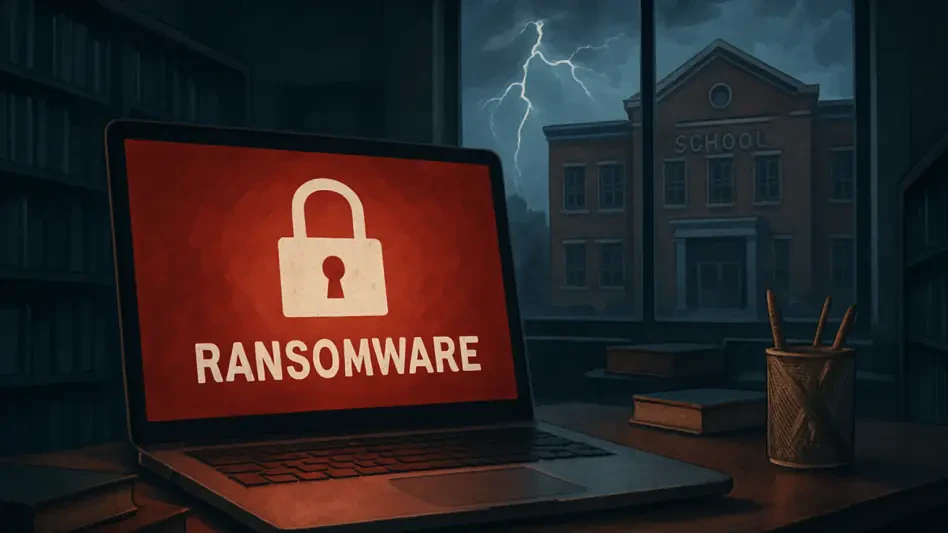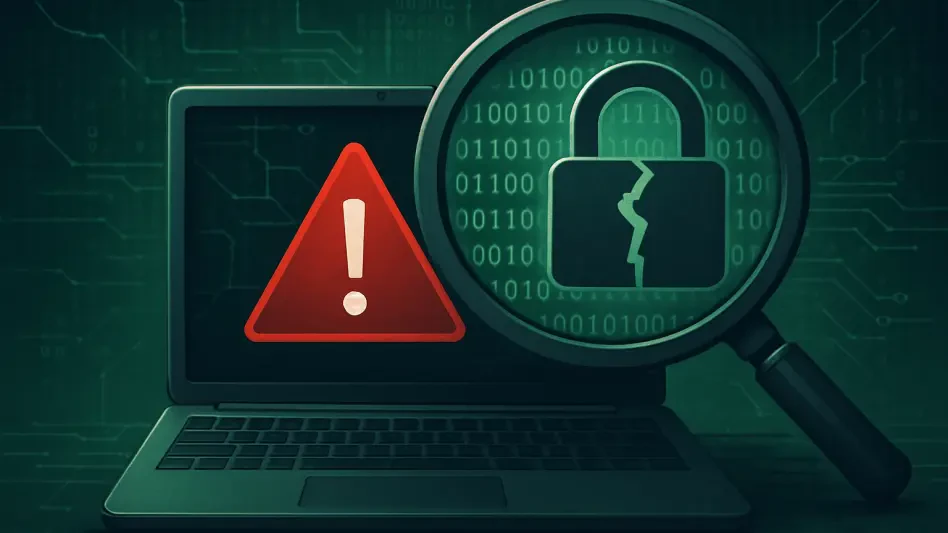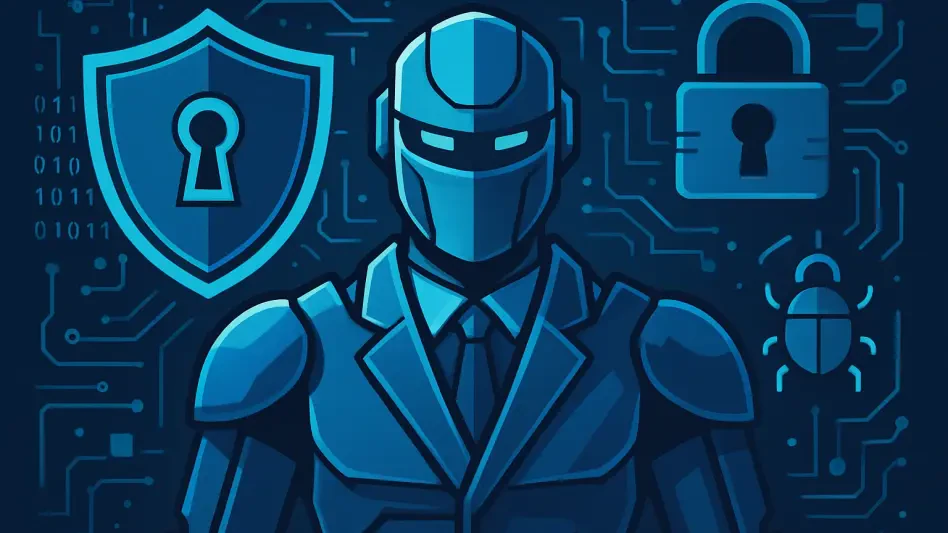The rapidly evolving field of Internet of Things (IoT) devices, smart-home gadgets, and embedded technologies has introduced significant cybersecurity challenges. The EU’s Cyber Resilience Act (CRA), a far-reaching regulatory framework, aims to address these vulnerabilities, setting a new benchmark for how IoT devices are designed, manufactured, and maintained. This article delves into the CRA’s rationale, requirements, and anticipated global impact.
Understanding the CRA’s Rationale
Rising Security Concerns
For years, cybersecurity experts have warned about the inherent risks in IoT devices, often left vulnerable to hacking and unauthorized access due to lax security measures from manufacturers. From smart TVs to baby monitors, these devices can be exploited for malicious purposes, including surveillance and data theft, putting user privacy at significant risk. The proliferation of these devices has not been matched with sufficient security standards, leading to numerous incidents of data breaches and unauthorized remote control, which have raised alarms among security professionals and consumers alike. The urgency to plug these security gaps grows as IoT adoption rates continue to rise exponentially across homes and industries.
Moreover, the widespread integration of IoT devices into everyday life—from smart refrigerators and fitness bands to home security systems—means that a solitary vulnerability can cascade into severe consequences for users. Hackers can exploit these weak points to create botnets, carry out Distributed Denial of Service (DDoS) attacks, or infiltrate corporate networks through seemingly harmless gadgets. The potential for damage is magnified, underscoring the need for robust security frameworks to be in place to safeguard these interconnected devices. As the number of IoT devices continues to expand, the pressing need for solid cybersecurity measures has never been clearer.
Urgency for Stricter Regulations
The urgency to implement stringent regulations is palpable, with increasing incidents highlighting the need for robust security frameworks. The EU has taken the lead by setting out the Cyber Resilience Act, a comprehensive approach to tackling IoT security concerns. This act comes at a time when various nations are developing their own security guidelines, albeit with varying degrees of rigor and enforceability. The CRA stands out for its all-encompassing and binding nature, imposing detailed requirements that ensure manufacturers prioritize security throughout a device’s lifecycle. This regulatory move signifies a commitment to protecting consumers and maintaining the integrity of IoT ecosystems.
The Cyber Resilience Act not only aims to enhance the security of IoT devices but also seeks to hold manufacturers accountable for security breaches and lapses. By mandating security by design principles, regular vulnerability assessments, and rapid incident reporting, the CRA ensures that security measures are not mere afterthoughts but integral to the development process. With such guidelines in place, the EU hopes to prevent the recurrence of widespread security failures that have plagued the IoT space. This proactive approach is projected to greatly reduce the risks associated with IoT devices, benefiting both users and manufacturers in the long run.
Key Provisions of the CRA
Mandatory Compliance
The CRA demands obligatory adherence, with manufacturers required to integrate security measures from the development phase. This regulatory framework aims to be fully operational by the end of 2027, and non-compliance will result in significant consequences for manufacturers. By enforcing mandatory compliance, the CRA ensures that all IoT devices sold within the EU meet strict security standards, thereby safeguarding users against potential threats. Manufacturers must undertake detailed risk assessments, implement robust security configurations, and provide clear user guidelines on secure usage and decommissioning. The compliance mechanism also includes third-party audits and certifications for higher-risk devices, ensuring an additional layer of scrutiny.
To adhere to these regulations, manufacturers need to overhaul their development processes, placing security at the forefront from the very beginning. This involves substantial revisions in product design, the incorporation of secure default settings, and continuous monitoring for vulnerabilities. Additionally, they must ensure timely updates and patches are available to address evolving threats. The CRA’s stringent enforcement measures are designed to create a culture of security-first within the IoT industry, leading to widespread improvements in device resilience and trustworthiness. This overarching framework aims to foster a secure IoT environment where consumers can confidently rely on their connected devices without fearing security breaches.
Software Bill of Materials (SBOM)
Central to the CRA is the Software Bill of Materials (SBOM), which mandates manufacturers to maintain a detailed list of software components for each device. This document must be continuously updated, ensuring accountability and transparency throughout the device lifecycle. The SBOM serves as an essential record for identifying vulnerable software dependencies, enabling effective vulnerability management and remediation. This requirement compels manufacturers to adopt comprehensive documentation practices, tracking each component from development through deployment. Consequently, the SBOM fosters better supply chain security and helps in expeditiously addressing any discovered vulnerabilities.
In practice, maintaining an up-to-date SBOM can be a daunting task, especially for complex devices with numerous software components. However, this transparency is crucial for proactive security management, allowing stakeholders to swiftly pinpoint and rectify potential issues. Automated tools and software composition analysis (SCA) can be instrumental in managing SBOMs efficiently, providing real-time insights into software inventories and dependencies. The overarching goal of the SBOM is to bolster device security by ensuring that all software elements are accounted for and regularly monitored, preventing vulnerabilities from turning into points of exploitation. Through this focus on comprehensive documentation, the CRA aims to strengthen the overall security posture of IoT devices.
Enhancing Security Standards
Security by Design and Default
To mitigate risks, the CRA emphasizes the principle of security by design and default, ensuring that manufacturers prioritize security from the outset. Devices must be secure from the beginning, incorporating robust default configurations that minimize potential security gaps. This approach mandates that security measures are integral to the device’s architecture, rather than being added as an afterthought. It involves embedding security protocols into every layer of the device, from hardware and software design to network configurations, thereby creating a resilient security framework. By adopting these principles, manufacturers can significantly reduce the attack surface and mitigate the risk of exploitation.
Additionally, security by design and default requires manufacturers to conduct thorough threat modeling and risk assessments during the development phase. This includes identifying potential security challenges and implementing countermeasures to address them. Regular testing and validation are essential to ensure that devices remain secure throughout their lifecycle. Manufacturers must also provide users with essential security settings and guidelines, assisting them in safeguarding their devices. This proactive strategy transforms the development process, making security an integral part of IoT innovation. The CRA’s insistence on security by design and default aims to elevate the overall security standards within the IoT industry, fostering the creation of safer and more reliable connected devices.
Ongoing Vulnerability Management
A continuous process of identifying, reporting, and addressing vulnerabilities is required under the CRA, ensuring that devices remain secure over their lifespan. This proactive approach mandates manufacturers to establish systems for regular vulnerability assessments, timely updates, and patches, ensuring that potential risks are promptly mitigated. Such vigilance in vulnerability management helps to maintain device integrity, prevent exploitation, and safeguard user data. Manufacturers must employ automated monitoring tools to detect and report vulnerabilities in real-time, enabling swift responses to emerging threats. This dynamic approach is crucial in the rapidly evolving IoT landscape, where new vulnerabilities can arise unexpectedly.
The CRA also enforces a stringent incident reporting protocol, requiring manufacturers to notify EU authorities of any discovered vulnerabilities within 24 hours. This rapid reporting mechanism ensures that security issues are addressed promptly, limiting the potential for widespread damage. By mandating continuous vulnerability management, the CRA drives manufacturers to be constantly vigilant and responsive, thereby enhancing the resilience of IoT devices. Manufacturers are encouraged to collaborate with cybersecurity experts and leverage advanced technologies to build robust vulnerability management systems. Through these comprehensive measures, the CRA aims to foster a secure IoT environment, protecting users against evolving cyber threats.
Impact on Manufacturers
Challenges in Compliance
Meeting the rigorous requirements of the CRA presents significant challenges, particularly for smaller companies that may lack the necessary resources and technical expertise. Compliance demands substantial investments in cybersecurity infrastructure, ongoing monitoring systems, and skilled personnel capable of managing security protocols. This comprehensive overhaul can be particularly burdensome for businesses operating with limited budgets and modest technical capabilities. Smaller manufacturers must adapt to the stringent security standards set forth by the CRA, necessitating a reallocation of resources and a paradigm shift in their approach to product development.
The CRA also poses challenges in terms of intellectual property concerns and supply chain security. Manufacturers must balance transparency with the protection of proprietary information, which can be a delicate and complex process. Furthermore, they must ensure that their supply chain partners adhere to the same rigorous security standards, necessitating comprehensive vendor compliance programs. This added layer of responsibility can be overwhelming for smaller companies, requiring them to develop robust compliance frameworks and cultivate closer relationships with vendors. Despite these challenges, the CRA presents an opportunity for manufacturers to enhance their security practices, fostering greater trust and reliability in the IoT ecosystem.
Intellectual Property and Supply Chain Security
Manufacturers must navigate intellectual property concerns while ensuring their supply chain partners also meet the CRA’s stringent requirements. This necessitates comprehensive vendor compliance programs to maintain overall device security. Intellectual property challenges arise from the need to disclose software components while safeguarding proprietary technologies. Manufacturers may be wary of exposing sensitive information that could be leveraged by competitors. To address these concerns, they must establish clear legal frameworks and contracts that protect intellectual property while ensuring transparency and accountability.
Moreover, supply chain security is critical to the CRA’s success. Manufacturers must scrutinize their suppliers’ security practices, ensuring they adhere to the same rigorous standards. This involves conducting regular audits, establishing comprehensive security protocols, and fostering collaborative relationships to promote compliance. The CRA encourages manufacturers to develop vendor compliance programs that incorporate rigorous security assessments, regular monitoring, and incident reporting mechanisms. By fortifying supply chain security, manufacturers can mitigate risks associated with third-party components, creating a more secure and resilient IoT environment. These measures necessitate a concerted effort and investment but ultimately contribute to a safer and more dependable IoT landscape.
Global Implications and Industry Trends
Setting a Global Benchmark
The CRA is poised to influence global standards for IoT security, much like the EU’s General Data Protection Regulation (GDPR) has shaped data privacy practices worldwide. The stringent requirements outlined in the CRA could serve as a benchmark for other nations developing their own IoT security frameworks. This harmonization of security practices can lead to enhanced consumer protection and a more uniform approach to cybersecurity across borders. As countries observe the outcomes of the CRA, they may adopt similar regulatory measures, driving a worldwide elevation in IoT security standards.
With the CRA setting the bar high, manufacturers worldwide may preemptively align their security practices with these regulations to cater to the European market. This proactive alignment will not only ensure compliance with the CRA but also position manufacturers advantageously in other regions that may adopt similar standards subsequently. The influence of the CRA could extend beyond Europe, prompting international standard bodies to revise their guidelines and pushing the IoT industry towards more rigorous security measures globally. This shift towards comprehensive security protocols can help safeguard IoT devices from vulnerabilities, fostering consumer trust and enhancing the reliability of connected technologies.
Harmonizing International Efforts
While the EU’s CRA is mandatory, similar efforts in other countries, such as the US’s Cyber Trust Mark, tend to be less stringent or voluntary. These international initiatives might eventually align with the CRA, fostering a harmonized approach to IoT security worldwide. The Cyber Trust Mark, modeled after the Energy Star program, focuses on consumer awareness, indicating that a device meets certain cybersecurity criteria. Although voluntary, the mark encourages manufacturers to prioritize security, potentially paving the way for stricter regulatory frameworks in the future. As global security concerns intensify, nations may recognize the benefits of a harmonized approach, leading to an international consensus on IoT security standards.
The CRA’s comprehensive stipulations, encompassing security by design principles, ongoing vulnerability management, and mandatory SBOMs, offer a blueprint for other regulatory efforts. Countries looking to bolster their IoT security measures can reference the CRA, adopting its rigorous framework to enhance device resilience. This global convergence of security practices can minimize discrepancies and ensure a more cohesive cybersecurity landscape. Through these collaborative efforts, countries can collectively address the challenges posed by IoT vulnerabilities, fostering a safer and more reliable ecosystem for connected devices. The CRA’s influence is expected to spur international dialogue and cooperation, driving a unified approach to IoT security.
Categorizing Devices for Proportionate Compliance
Device Classification
The CRA categorizes IoT devices into four groups, ensuring compliance measures align with the security risk posed by each device. This approach helps streamline compliance efforts, making it manageable for manufacturers to adhere to the CRA’s stipulations. The device classification is designed to ensure that security requirements are proportionate to the risk, with simpler self-assessments for low-risk products and stringent certifications for critical devices. This categorization includes:
- Default: Low-risk products, such as printers and basic computer applications, which qualify for simpler self-assessments.
- Important, Class I: Devices that provide essential security services, like operating systems and smart security cameras, often self-assessed by manufacturers.
- Important, Class II: Higher security-providing devices, such as firewalls, which require third-party assessments.
- Critical: Devices whose compromise would have catastrophic consequences, like smart meter gateways, subject to the strictest certification requirements.
By categorizing devices based on risk level, the CRA ensures that compliance measures are proportionate and manageably distributed across products, creating a pathway for widespread adherence without overly burdening any specific segment of the industry.
Addressing Diverse Compliance Needs
This classification approach ensures that compliance measures are proportionate and manageable for manufacturers, creating a pathway for widespread adherence without overly burdening any specific segment of the industry. While the majority of products fall under simpler self-assessments, critical devices necessitate rigorous third-party certifications, ensuring that high-risk products meet the strictest standards. Manufacturers must undertake thorough risk assessments to categorize their devices accurately, complying with the appropriate security requirements. This structured approach helps streamline the compliance process, making it accessible for companies of varying sizes and capabilities.
Addressing diverse compliance needs also involves providing clear guidelines and support for manufacturers, facilitating the transition to CRA adherence. Regular training sessions, detailed documentation, and collaborative forums can aid manufacturers in understanding and implementing the CRA’s requirements efficiently. This inclusive approach promotes widespread compliance, fostering a culture of security within the IoT industry. By ensuring proportionate measures, the CRA aims to elevate overall security standards without imposing undue burdens, driving sustainable improvements in device resilience and reliability.
Conclusion: Transforming IoT Security
Future of IoT Industry
The implementation of the CRA marks a transformative period for the IoT industry, driving manufacturers to prioritize security and potentially leading to industry consolidation. As smaller manufacturers face challenges in meeting the stringent requirements, there could be a shift towards partnerships or mergers with larger entities that possess the required resources and expertise. This consolidation can lead to a more streamlined and efficient industry, with robust security practices becoming the norm.
The CRA’s rigorous stipulations emphasize security by design, vulnerability management, and comprehensive user guidelines, promoting substantial improvements in device security. These measures necessitate significant investments and innovation, fostering a competitive environment where security is a crucial differentiator. As manufacturers navigate this new regulatory landscape, the CRA’s influence will likely extend beyond the EU, shaping the future of cybersecurity standards worldwide. Through these efforts, the goal is to create a safer, more secure environment for IoT devices, ultimately protecting users and enhancing the reliability of smart technologies globally.
Anticipated Benefits
The rapidly advancing field of Internet of Things (IoT) devices, smart-home gadgets, and embedded technologies has brought about serious cybersecurity challenges. To tackle these issues, the European Union has introduced the Cyber Resilience Act (CRA), a comprehensive regulatory framework designed to address vulnerabilities in these modern technologies. The CRA sets new standards for how IoT devices should be designed, produced, and maintained, aiming to fortify their security against potential threats.
As the IoT market expands, the interconnected nature of devices makes them prime targets for cyber attacks, which can have far-reaching consequences. The CRA’s goal is to ensure that security is a fundamental component from the very beginning of the design process, rather than an afterthought. By mandating rigorous testing and regular software updates, the CRA aims to create a safer digital environment for consumers and businesses alike.
This act also has a significant global impact. Given the EU’s influence on international regulations, other regions are likely to adopt similar standards, driving a universal approach to cybersecurity in IoT devices. Ensuring that these devices include robust security measures is critical for protecting user data, maintaining privacy, and securing infrastructure. The CRA is poised to become a benchmark in the evolving landscape of digital security, guiding manufacturers and developers toward a more secure future for IoT technologies.







